Art World
5 of Fashion’s Most Exciting Emerging Stars Share Their Favorite Art Inspirations
From Batsheva Hay to Emily Adams Bode, some of fashion's up-and-coming sensations talk to us about how art influences their work.
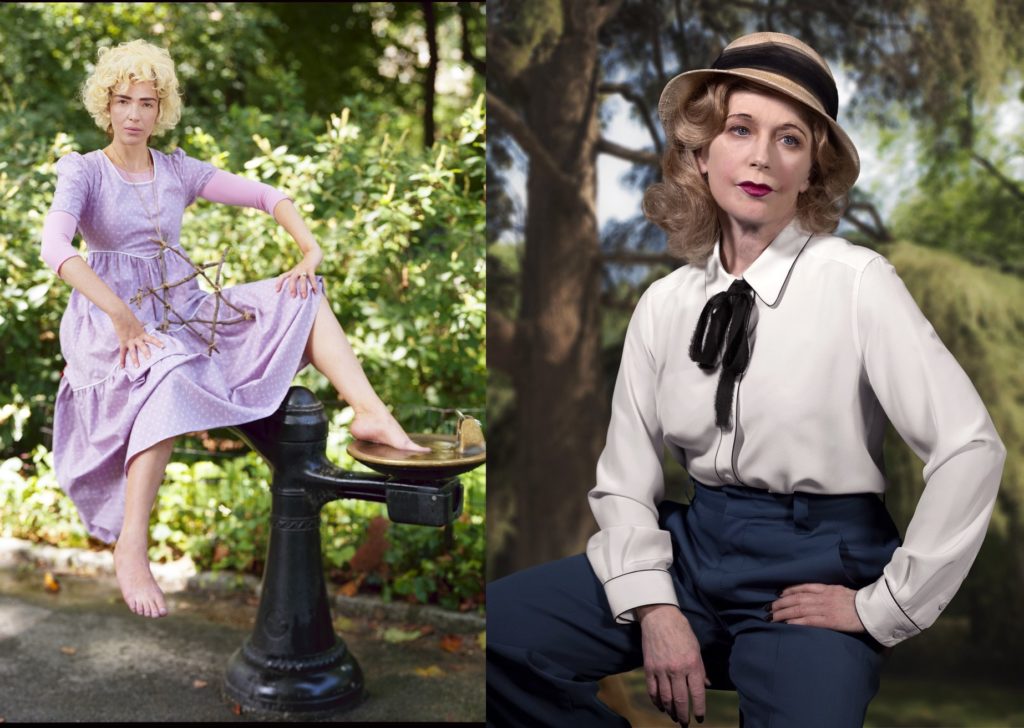
From Batsheva Hay to Emily Adams Bode, some of fashion's up-and-coming sensations talk to us about how art influences their work.

Karen Quarles

A new generation of fashion designers is breaking into the mainstream, winning plaudits from critics and support from fashion incubators like the CFDA/Vogue Fashion Fund and VFiles—not to mention their cadres of celebrity fans. These designers, in turn, often draw inspiration from fine artists in the contemporary art world. To see how talent is cross-pollinating in these two fields, we asked designers from five standout labels to tell us about the art and artists that shape their visions.
You’ve seen designer Batsheva Hay’s puffy-sleeved, ruffle-trimmed dresses on off-duty models and actresses like Zoe Kazan and Mandy Moore as they make the rounds of late-night talk shows and Hollywood premieres. Hay’s line reflects her affinity for 1980s styles epitomized by brands like Laura Ashley and Gunne Sax. Though she has no formal design training (she studied law), art permeated her childhood, thanks to her mother’s painting practice.
Hay’s career in fashion began two years ago, when she decided to rework a damaged vintage dress. As the compliments rolled in, she began accepting commissions from friends and eventually retailers. Responsible, in part, for the popularity of the pioneer-woman and Victorian trends that some see as a feminist alternative to more revealing looks, Hay herself was motivated by a desire to fit into the Orthodox Jewish lifestyle embraced by her husband, the fashion photographer Alexei Hay, while asserting her offbeat individual style.

Batsheva’s S/S 2019 Collection. Photo: Alexei Hay.
What artist has inspired you professionally or personally?
My starting point, creatively, is Cindy Sherman and Diane Arbus; their pictures, their people, shape my aesthetic world and what I imagine the woman wearing my clothes to be like. I also draw from Judy Chicago and her explosive, ruffly, pastel feminist world. I have always loved the paintings of Marlene Dumas and their beautiful decay. Leelee Kimmel is blowing my mind. She is painting in such an expressive way, and doing incredible work in virtual reality.
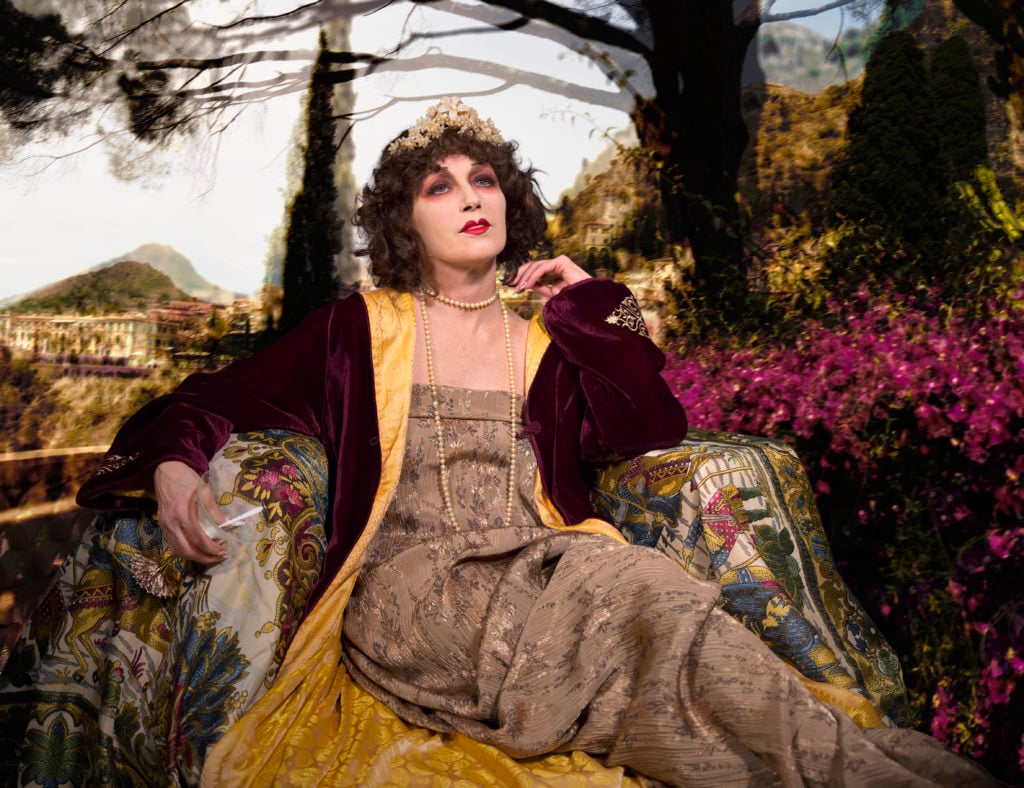
Cindy Sherman. Untitled #583, (2016). © Cindy Sherman. Courtesy of the artist, Metro Pictures and Sprüth Magers.
How has it influenced your work or affected your life?
Seeing Cindy Sherman’s “Untitled Film Stills” exhibit at the MoMA when I was a kid was a huge thing for me. I connected to it so deeply. Sometimes I imagine I’m dressing these artists; sometimes I imagine I am these artists. They basically help me imagine a different reality.
What are you working on right now, and how is it influenced by art?
I am currently working on a new collection and planning a photo shoot around it. We are using Surrealist references at the moment for the shoot. I’m trying to make this new gig—fashion—more interesting the more entrenched I get in it. What does “pre-fall” mean anyway? I am trying to get outside the grind by making each collection an opportunity to create a new world and new imagery, and I have to draw from art references to make it feel worth it.
Where most people might see a drawer of old dish towels and tablecloths ready to be hauled to the Goodwill, Emily Adams Bode sees the makings of her next collection. The menswear designer is known for creating one-of-a-kind pieces mainly from vintage textiles made by women for domestic use, and she’s amassed a stockpile of antique linens from around the world. Bode, who grew up sewing clothes and toys from household fabrics, honed her technical skills at Parsons School of Design, in addition to earning a philosophy degree in aesthetics. Since she launched her company in 2016, her jackets made from patchwork quilts and shirts cut from curtain cloth have become a hit with tastemakers, including Donald Glover, who wore Bode pants for Childish Gambino’s debut performance of “This Is America” on SNL this spring.
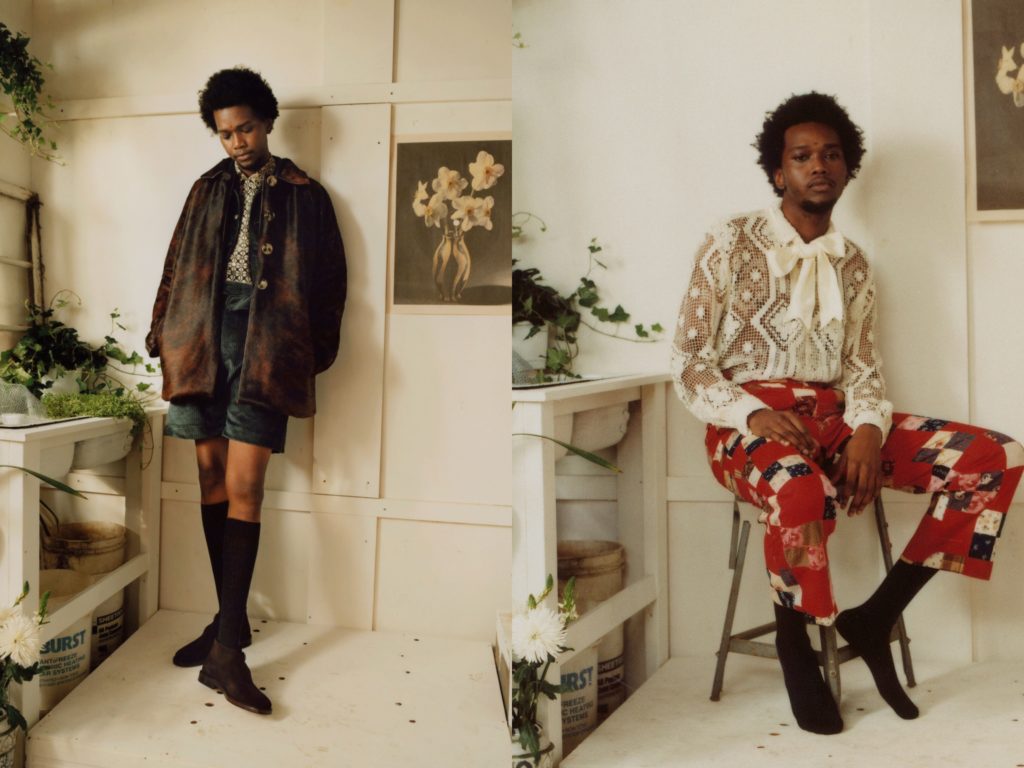
Bode’s F/W 2018 Collection. Photo: Andrew Jacobs.
What artist has inspired you professionally or personally?
I often look at the work of Bas Jan Ader, Robert Gober, Bruno Munari, and Cecil Beaton. I am inspired by the way these artists and others presented and preserved their art-making practice through ephemera and image-making.
How has it influenced your work or affected your life?
I make clothing primarily from found domestic textiles with a focus on personal histories. Looking at the way these artists, such as Gober or Munari, reflect on everything from emotive personal narratives and relationships to everyday objects, concepts, and materials is heavily influential. I believe the way I construct a collection—and each garment—is similar to the studio practice of some of these artists. Each collection of mine begins with conversations with an individual in my life to whom I have an intimate connection; with this individual I create a world inspired by their family history, rituals, lifestyle, and relationship to the domestic space and clothing.
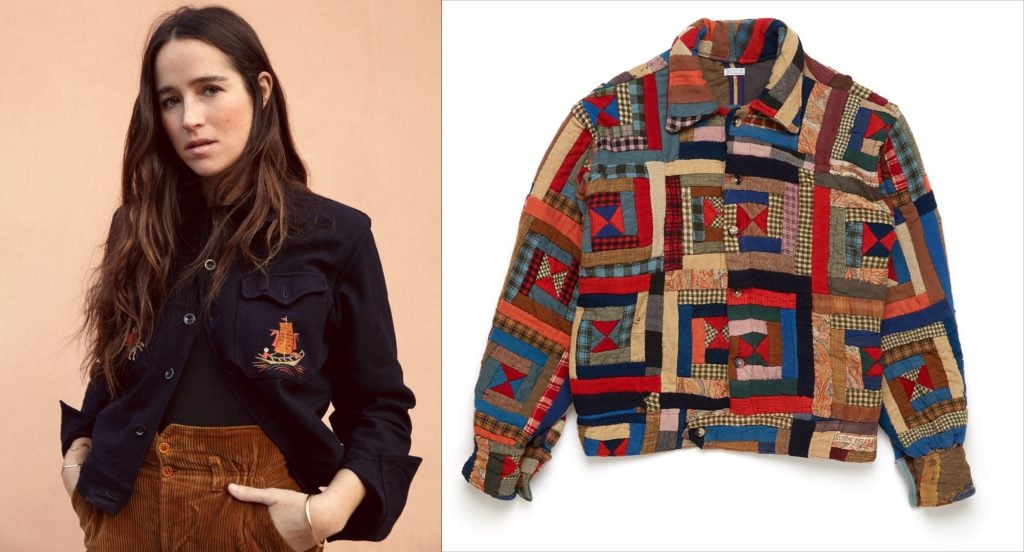
Left: Emily Adams Bode, Right: One-of-a-kind Quilt Jacket. Courtesy of Bode.
What are you working on right now, and how is it influenced by art?
I am beginning a project inspired by gallerist Todd Alden. With his gallery, Alden Projects, he too explores “the art of untold tales,” such as ephemera from renowned artists and outsider artists. I am intrigued by his personal history and what has brought him to be a collector and researcher of items otherwise forgotten and made to be discarded.
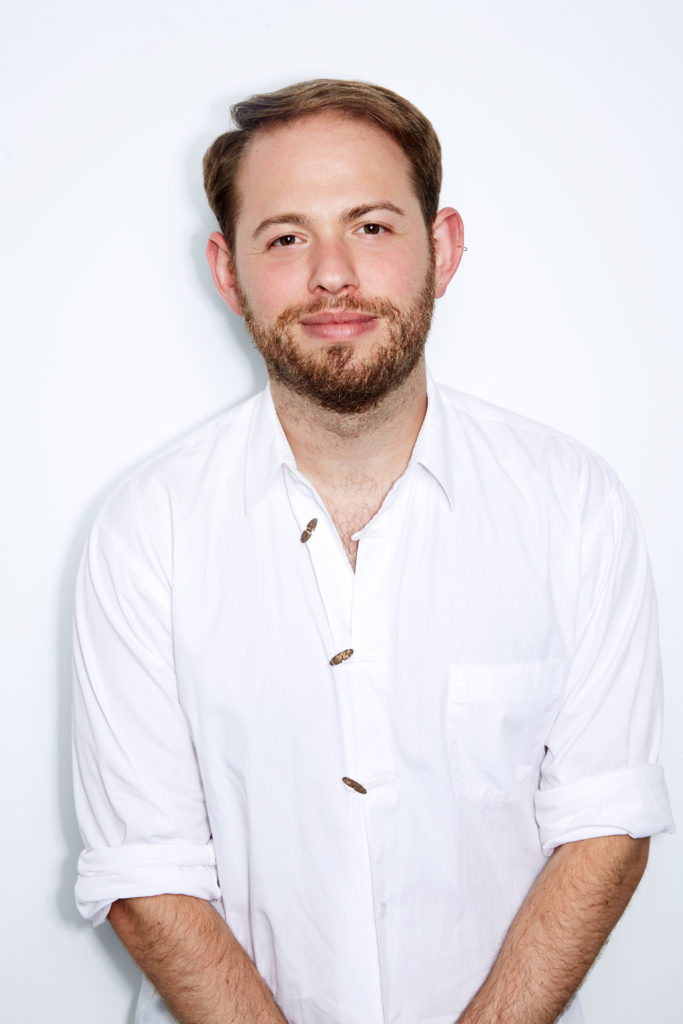
Designer Jonathan Cohen. Courtesy of Jonathan Cohen.
Fresh out of Parsons School of Design, Jonathan Cohen landed a job as a freelance costume designer working for Patricia Field on the era-defining show Sex and the City, as well as the sartorially over-the-top Ugly Betty. Although his own line displays the same charisma and energy, it’s anything but costumey. Elegance and ease define the work of the California native, who also has a knack for creating prints—which he’s splashed across day dresses, evening wear, and even boots, in a collaboration with shoe designer George Esquivel. Cohen met his business partner, Sarah Leff, at Parsons; together they launched the label in 2011. Since then he’s garnered a following that includes actress Uzo Adubo, model Gigi Hadid, and Instagram fashion partnerships director Eva Chen.
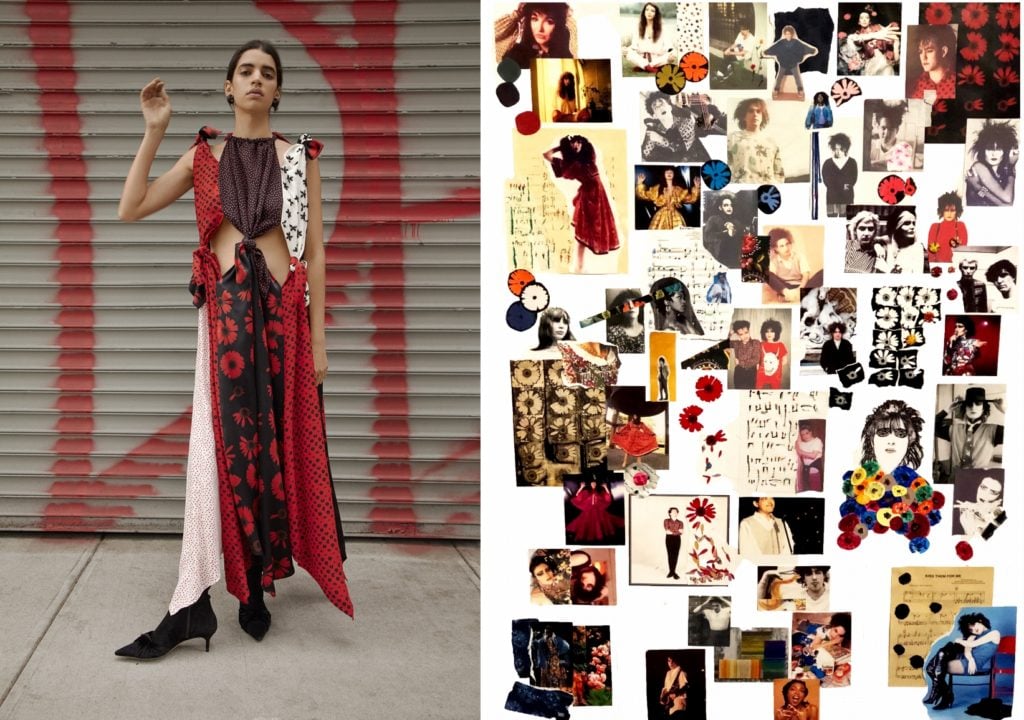
Left: Jonathan Cohen S/S 2019, photo: Thomas Giddings; Right: Mood board by Jonathan Cohen.
What artist has inspired you professionally or personally?
My family is from Mexico City, so I grew up learning a lot about Mexican artists. Since I was young, I have always connected with Frida Kahlo. Her work comes from such a pure place, and that’s such an important aspect to being an artist or designer. You feel every emotion in her work and a sense of honesty that’s rare to come across. As I got older, it was interesting to see Frida’s notoriety become much more global, even though she had passed away in 1954. I credit Salma Hayek’s film as a key factor in this, and it’s great to see Frida get the credit she deserves. I was recently in Mexico City visiting family, and Frida’s face was on everything from posters to balloons. She has become such an icon of Mexican culture.
Many of my past collections have been inspired by female artists who I felt were somewhat or completely overshadowed by their male counterparts, such as Kahlo, Judit Reigl, and Lee Krasner. I think it’s important to highlight these women who were ahead of their time but overlooked because of their gender. I’d be in complete shock when I would speak about Krasner and many people wouldn’t know who she was!
Kim Shui is a mixmaster, frequently overlapping colors, textures, and ideas in a single dress or winter coat. She attributes the magpie aesthetic of her two-year-old label to the confluence of cultures in her life. Of Chinese descent, Shui was born in the United States, raised in Italy, and trained at London’s Central Saint Martins after receiving an undergraduate degree in French literature from Duke. Her eclectic pieces—which often fuse street, club, and athleisure references with traditional styles such as cheongsams and classic shirting—are favored by music-industry heavyweights Solange and Cardi B, as well as the model Maye Musk (yes, Elon Musk’s mother).
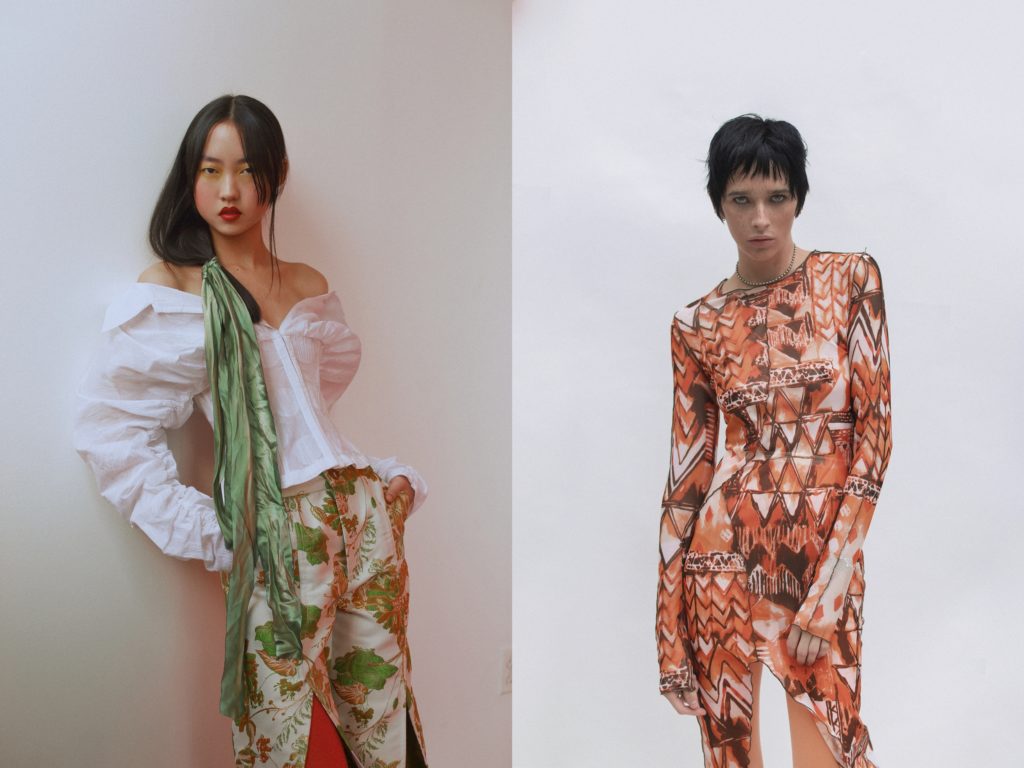
Kim Shui, S/S 2019 Collection. Photo: Franco Schicke.
What artist has inspired you professionally or personally?
I have always been very interested by human form, so in my work I have been inspired by Kazimir Malevich paintings and sketches where form is distorted, especially those where he has depicted figures. In a previous project, I had made garments that recreated those forms through outlining so that there were areas of space and empty space so as to confuse the viewer. There is also a certain geometric rhythm and repetition of form in some of his work that I have used in my placements of contrasting fabrics. I don’t think there has actually been a season where I haven’t been inspired by art!
The work of this five-year-old fashion collective is often described as part-fashion, part-art project. Formed by designers Patric DiCaprio, Claire Sullivan, and Bryn Taubensee (a fourth member left the team earlier this year), Vaquera has built its reputation on high-concept looks that aren’t necessarily retail-friendly but appeal to a cool art crowd, including Petra Collins and Michael Bailey Gates. The clothes are unisex, and runway shows have often subverted gender norms with male models in oversize bows or heels and their female counterparts in shirts and ties. Last year the group’s theatrical flair won them an unusual commission: Hulu tapped the brand to dream up a Handmaid’s Tale–themed collection to promote the dystopian series.
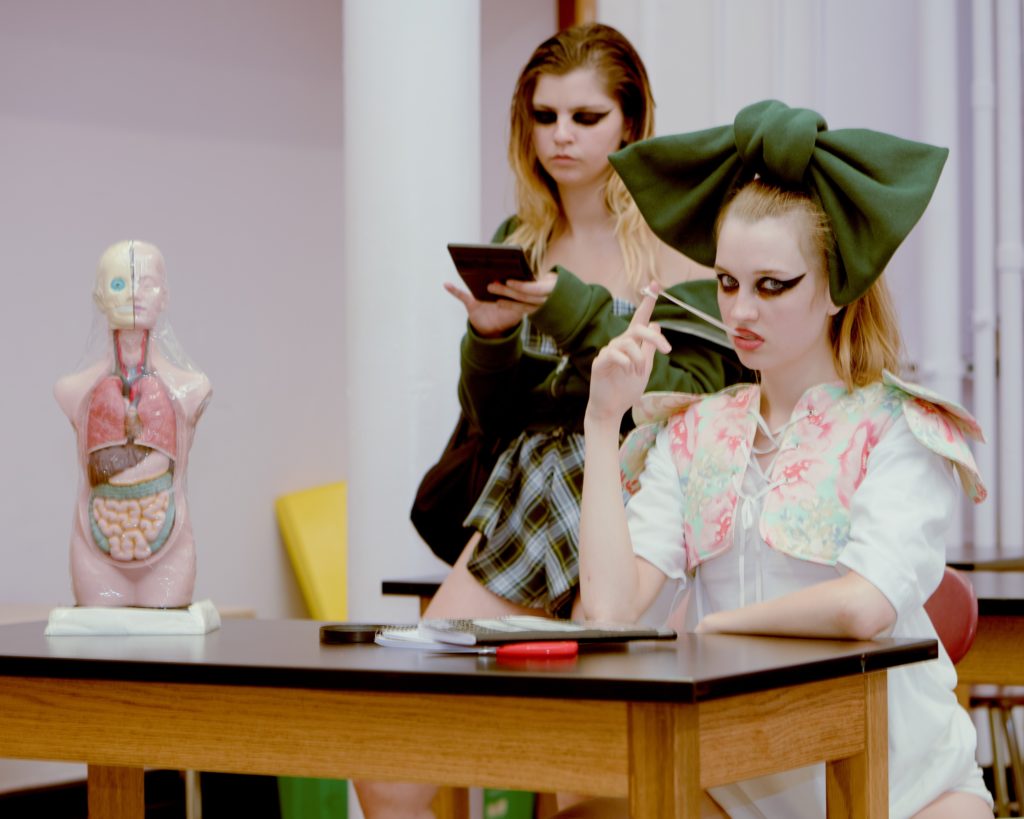
Vaquera S/S 2019. Photo: Alex Rotondo.
What artist has inspired you professionally or personally?
Bryn Taubensee: I like art that engages in the real, physical world, outside of gallery and museum walls. I don’t like the “holiness” that surrounds a lot of the lauded artists, and I believe that anything can be art. For example, I find amateur paintings really inspirational because they are so raw. For me, there is little distinction between “art” and doing something you love with passion and consideration.
Bernadette Corporation is one of my (and our) favorite artists. Their re-appropriation of and commentary on culture was very influential to me, as well as how far spread their work was. Their book Reena Spaulings changed my life when I first moved to New York—its nonsensicalness made just enough sense to me.
Claire Sullivan: I have always been inspired by art from the distant past. As cliché as it sounds, in high school I used to go to the museum to draw the marble figures. I loved the way a hard material like marble could be portrayed as soft skin or drapery. I’ve also always been inspired by Rococo architecture and paintings. The fantastic and ornamental style resonates with my taste as a designer. When I entered art school in Chicago, my appreciation for contemporary art expanded, and I became really interested in artists who were using Americana imagery and creating political work. I think our collections always portray a sort of “unbelievable” fantastic quality, while there are also often political, Americana undertones. I’m interested in the push and pull of something really beautiful and ornate representing something dark or heavy—whether it has political or personal meaning.
Patric DiCaprio: Squaresoft and the video games they were producing in the late 1990s and early ’00s have been an endless source of inspiration for me. Each game was a self-contained world that you could disappear into. It’s important to me that our collections have a similar expansive feeling.
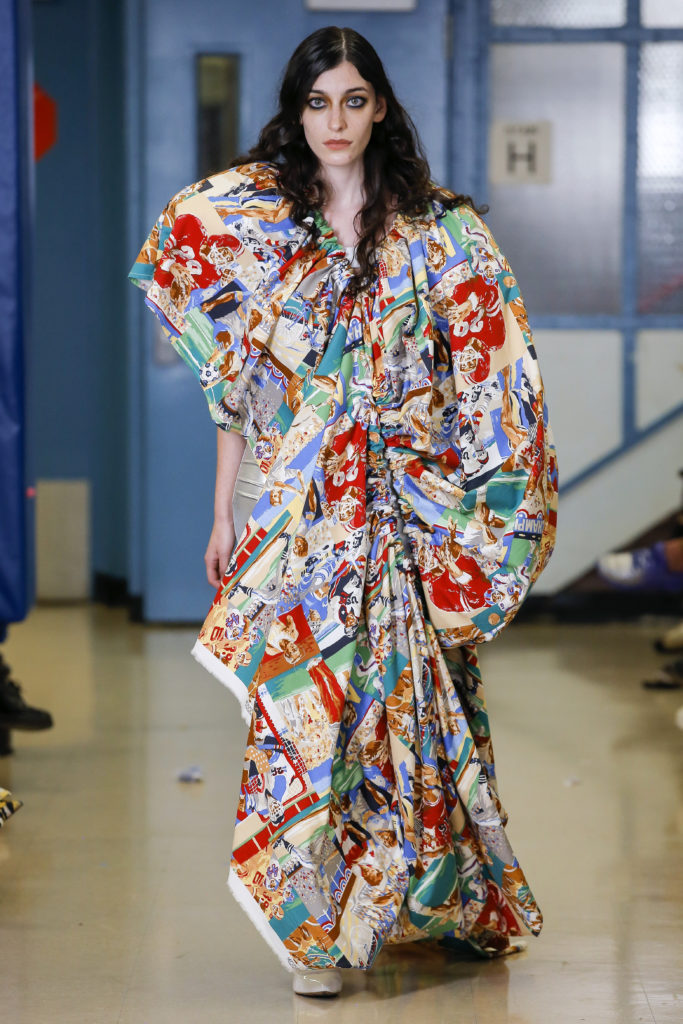
Vaquera, S/S 2019 Collection. Photo: Courtesy Vaquera.
How has it influenced your work or affected your life?
Taubensee: I became very interested in performance art in college and the idea that anything you did could be art—even daily, menial activities could be art if you wanted them to be. I think everything you do in life should be considered and pushed to its boundaries. You can make any moment a memorable moment if you decide to. I make the work I do at Vaquera because these are the clothes I want to see in the world—considered and created with thought and concept in mind, as opposed to the commercial, conceptually/emotionally empty clothing that mainstream brands push out.
DiCaprio: At Vaquera, we treat every piece or project we are working on as an artistic endeavor. It’s a shame that there has to be so much distinction between art and fashion. This rather strict distinction has left us feeling like outsiders in both the art and fashion worlds. We hope that our work can help bridge this gap a bit.
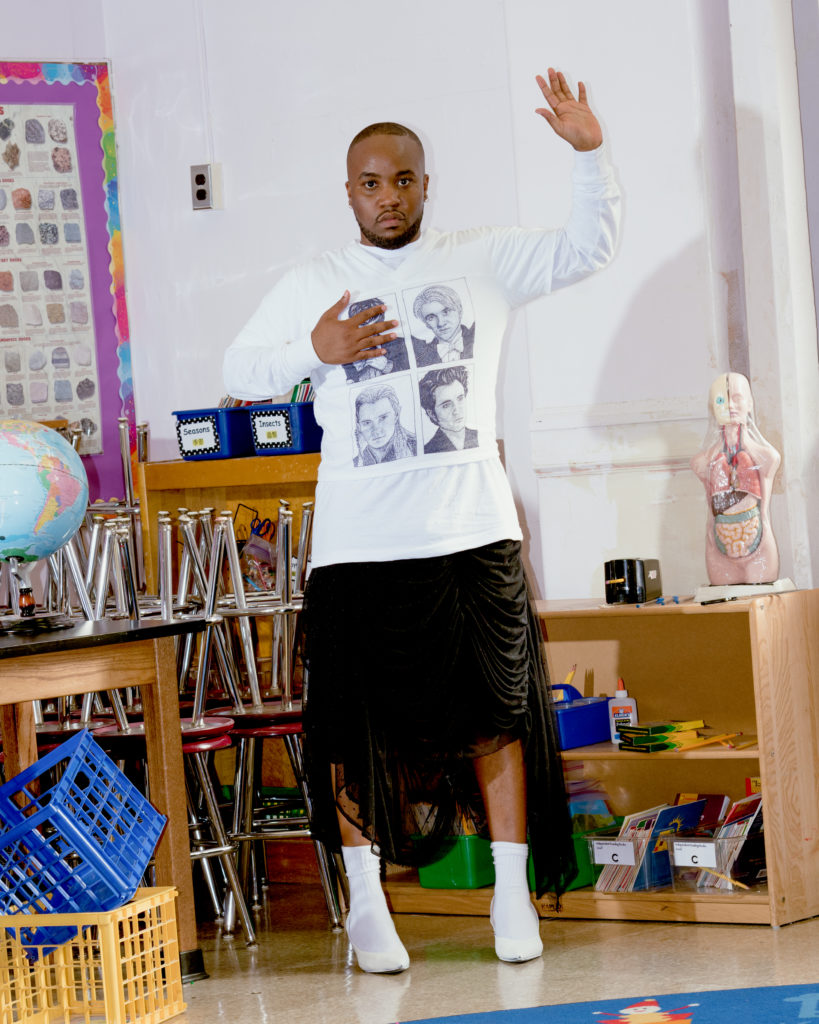
Vaquera S/S 2019. Photo: Alex Rotondo.
What are you working on right now, and how is it influenced by art?
Taubensee: We will soon be putting on a play at MoMA PS1 in collaboration with playwright Leah Hennessey. It will be a de-commercialized version of a famous, very commercial Broadway play. In this play, we will apply the philosophy that we have about fashion: that it should exist not just to sell but to serve as social commentary and a way to start conversations. This is a concept that comes from art and one that we want to extend into the material world.